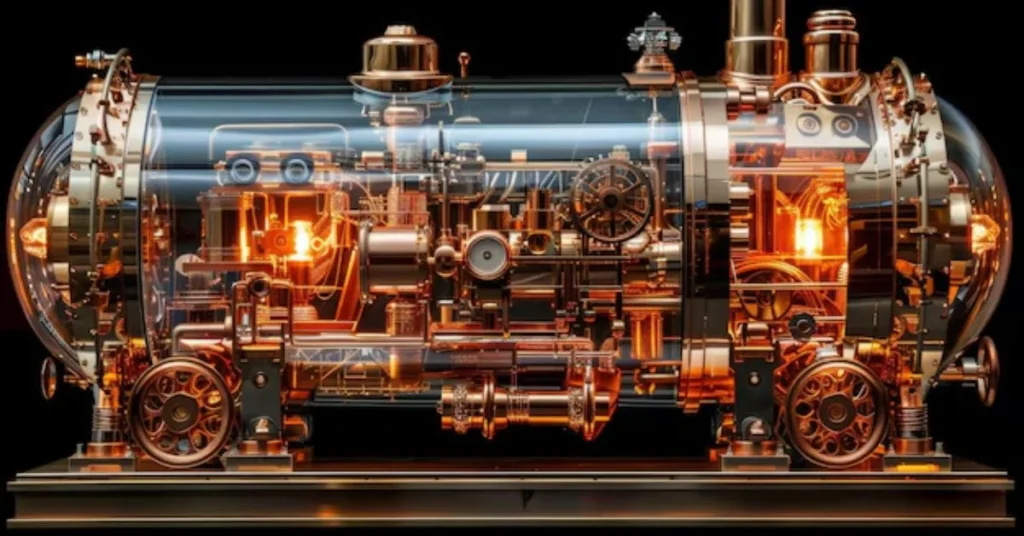
Larry Engelken invention oil and gas has been a significant breakthrough in the energy sector, shaping how resources are extracted and processed today. His contribution has led to more efficient methods, improving productivity and environmental safety in the industry. But what exactly did he invent, and how has it changed the world of oil and gas? In this post, we’ll explore Larry Engelken’s invention, its impact on the oil and gas industry, and the lasting effects on energy production.
Who Is Larry Engelken?
Larry Engelken: A Visionary in Oil and Gas
Larry Engelken Invention Oil and Gas is a name that is well-known among those in the oil and gas industry. He has spent years researching and developing new technologies that can make the extraction of oil and gas more efficient. His background in engineering and passion for innovation allowed him to bring forth ideas that would transform the way companies approach drilling and resource management.
Larry Engelken’s contributions have made him a respected figure in the industry, earning recognition for his groundbreaking inventions. But what makes his work so crucial to the field?
Must read Lemon Poppy Seed Muffins Tanana: A Delightful Recipe with a Twist
What Was Larry Engelkens Invention?
The Groundbreaking Technology Behind the Invention
Larry Engelken invention oil and gas focuses on improving extraction techniques and optimizing the processes used to obtain fossil fuels. This invention involves a unique method that enhances the efficiency of hydraulic fracturing, also known as “fracking.” Hydraulic fracturing is a process where high-pressure fluid is used to create fractures in underground rock formations, allowing oil and gas to flow more freely to the surface.
Larry Engelken’s approach introduced a new way of managing the pressure and flow of fluids during the fracturing process. This innovation not only increased the output of oil and gas wells but also reduced the amount of water and chemicals needed, making the process more environmentally friendly.
How the Invention Works
The technology uses a combination of advanced sensors and data analytics to monitor pressure levels in real-time during drilling operations. By adjusting the pressure precisely, Engelken’s invention can maximize the recovery of oil and gas while minimizing waste. This method allows companies to get more resources out of each well, which is critical for reducing costs and making the process more sustainable.
Impact of Larry Engelken’s Invention on the Oil and Gas Industry
Increased Efficiency in Resource Extraction
One of the most significant impacts of Larry Engelken’s invention is the increase in efficiency during oil and gas extraction. Traditional methods often required a lot of energy and resources, with some wells yielding less than expected. Engelken’s technology allows operators to control the flow of resources better, leading to higher yields from each drilling site.

Reducing Environmental Impact
Another crucial aspect of Engelken’s invention is its ability to reduce the environmental footprint of hydraulic fracturing. The process traditionally uses large volumes of water and chemicals, which can pose risks to nearby ecosystems. By optimizing the fluid flow and pressure, Engelken’s method requires fewer resources, making the process cleaner and safer for the environment.
Additionally, by using data to guide operations, companies can reduce the likelihood of accidents or leaks, which have been major concerns in the oil and gas industry. This has helped to improve the industry’s reputation and align it with more sustainable practices.
Why Is Larry Engelken’s Invention Important Today?
Addressing the Global Demand for Energy
Larry Engelken’s invention is particularly important given the world’s ever-growing demand for energy. As developing countries continue to industrialize, the need for oil and gas remains strong. Engelken’s technology helps ensure that the industry can meet this demand without exhausting resources too quickly.
With concerns about the future of fossil fuels and the need for a transition to renewable energy, innovations like Engelken’s provide a way to use existing resources more efficiently while alternative energy solutions are being developed.
Adapting to Changing Regulations
The oil and gas industry faces increasing pressure from governments and international bodies to reduce its carbon footprint. Engelken’s invention makes it easier for companies to comply with stricter environmental regulations by reducing water usage and minimizing emissions. This is crucial for the long-term sustainability of the industry, as companies must adapt to changing rules and expectations.
Challenges in Implementing Larry Engelken’s Invention
Initial Costs and Investment
Despite the benefits, Larry Engelken’s invention in oil and gas does come with challenges. One of the biggest hurdles is the initial cost of implementing new technology. Upgrading existing equipment and training staff to use new methods can be expensive, making some companies hesitant to adopt these changes quickly.

Technological Learning Curve
Another challenge is the learning curve associated with new technology. The use of real-time data monitoring and advanced sensors requires operators to have a deeper understanding of the equipment and how to adjust settings during drilling. This can slow down the adoption process, especially for smaller companies without the resources to train their workforce.
Resistance to Change
Some companies may be resistant to change, especially if they have been using traditional methods for many years. Convincing industry leaders to adopt new ways of doing things can be a slow process, even when the potential benefits are clear.
The Future of Larry Engelken Invention Oil and Gas
A Step Toward a More Sustainable Industry
As the world continues to search for ways to balance energy needs with environmental concerns, Larry Engelken’s invention in oil and gas represents a significant step forward. By making the extraction process more efficient and reducing the environmental impact, this innovation offers a way to maximize the use of existing resources while transitioning toward greener alternatives.
Potential for Broader Application
Engelken’s approach to real-time monitoring and fluid management could potentially be applied beyond oil and gas, influencing other fields that rely on resource extraction and process optimization. As more industries begin to adopt data-driven methods, the principles behind Engelken’s invention might inspire further advancements in efficiency and environmental stewardship.
Conclusion: Larry Engelken Invention Oil and Gas
In conclusion, Larry Engelken’s invention in oil and gas has made a lasting impact on the industry. By introducing a more efficient way to conduct hydraulic fracturing, he has helped companies increase their productivity while reducing their environmental footprint. Despite some challenges in implementation, the benefits of this technology are clear, offering a way for the industry to meet global energy demands more responsibly. As the world moves toward a greener future, innovations like Engelken’s will play a crucial role in bridging the gap between current needs and sustainable practices.
By understanding the significance of Engelken’s invention, we can appreciate how innovation continues to shape the future of energy.

FAQs About Larry Engelken Invention Oil and Gas
What is Larry Engelken’s invention in the oil and gas industry?
Larry Engelken’s invention focuses on improving the hydraulic fracturing process. It uses advanced technology to monitor and control fluid pressure during drilling, making resource extraction more efficient and environmentally friendly.
How does Larry Engelken’s invention benefit the environment?
The invention helps reduce the amount of water and chemicals used in hydraulic fracturing, lowering the environmental impact. It also improves the safety of drilling operations, decreasing the risk of leaks and accidents.
Why is Larry Engelken’s invention important for the future of energy?
Larry Engelken Invention Oil and Gas invention allows the oil and gas industry to extract resources more efficiently, helping to meet global energy demand while reducing waste. It’s an important step towards balancing traditional fossil fuel use with sustainable practices.
What are the challenges of using Larry Engelken’s technology?
Some of the main challenges include the high initial costs of implementation, the need for specialized training, and the resistance to adopting new methods within the industry.
How has Larry Engelken’s invention changed hydraulic fracturing?
His invention has made hydraulic fracturing more efficient by optimizing fluid flow and pressure, resulting in higher yields from each well and a more environmentally conscious approach.







